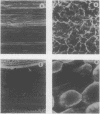Abstract
Osmotic shock, a 15-minute plasmolysis followed by a 15-minute rehydration in the cold, is a nondestructive technique which inhibits fusicoccin-stimulated H+ excretion from oat mesophyll cells (Avena sativa L.). Osmotic shock also causes a loss of intracellular solutes and stimulates H+ uptake, but osmoregulation can still occur, and enhanced H+ uptake is observed only at low external pH. It is concluded that osmotic shock interferes directly with the excretion of H+ rather than affecting only H+ or counter ion uptake.
Plasmolysis alone does not inhibit fusicoccin-enhanced H+ excretion, and the rehydration step must be rapid and in the cold for maximum inhibition. This suggests that the plasma membrane is perturbed, possibly due to release or rearrangement of membrane protein. Compared to corresponding osmolarities of sorbitol or NaCl, polyethylene glycol 4000 is much less effective during the plasmolysis step; the possibility is discussed that the ineffectiveness of polyethylene glycol 4000 is due to its preservation of plasmodesmata.
Full text
PDF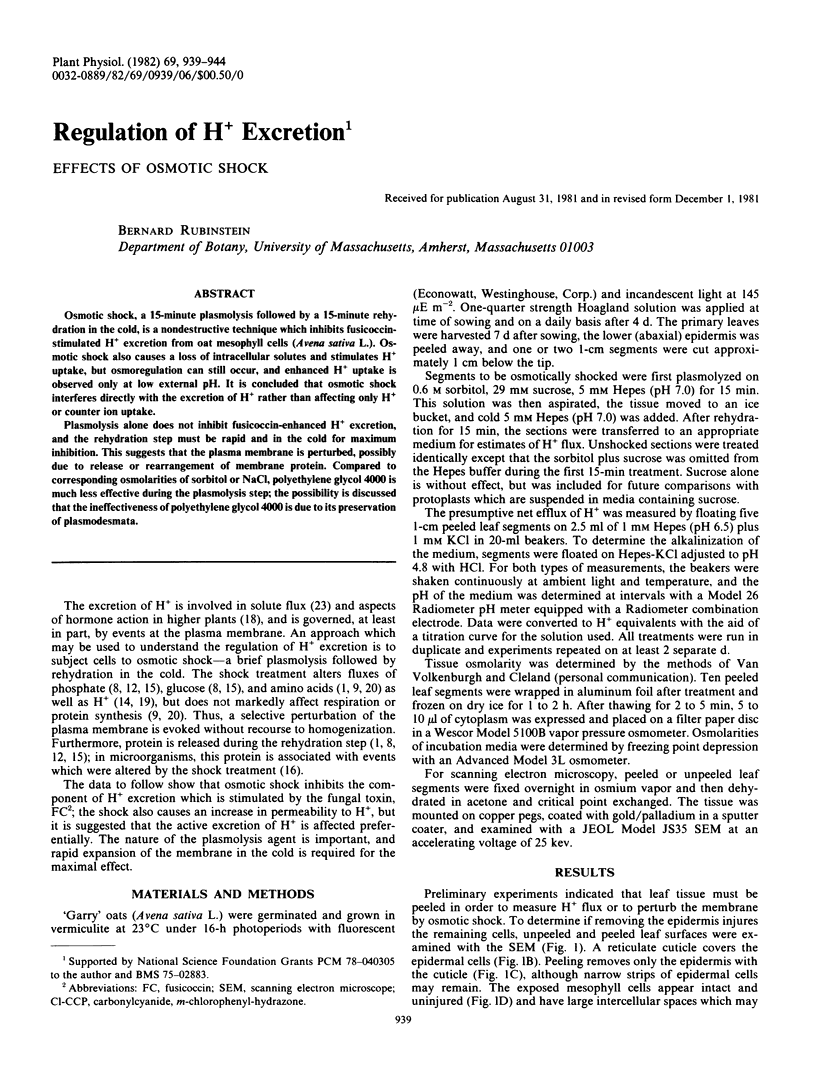
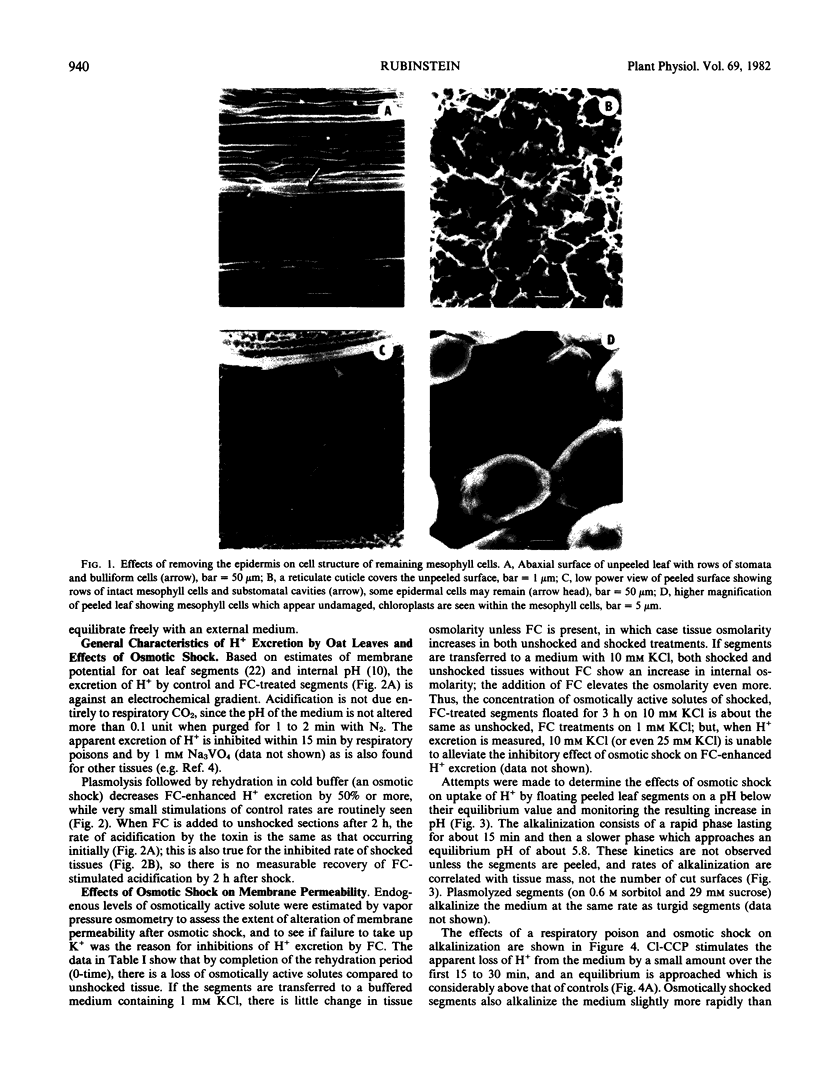
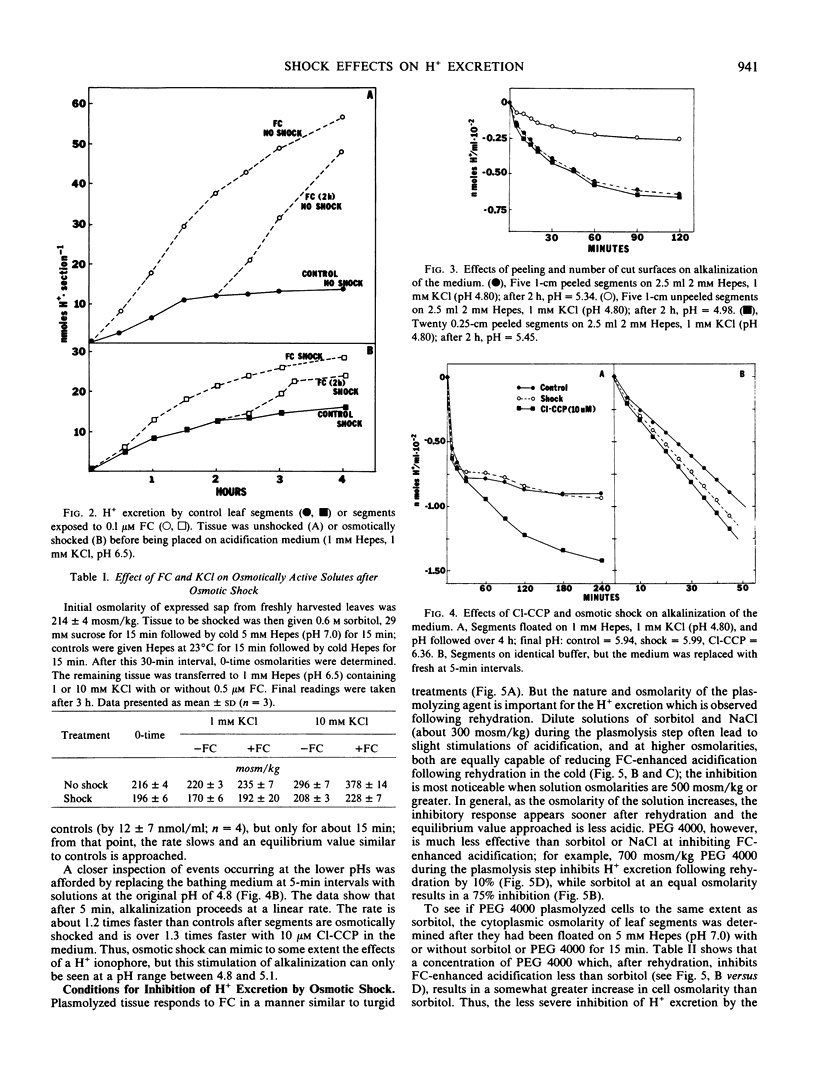
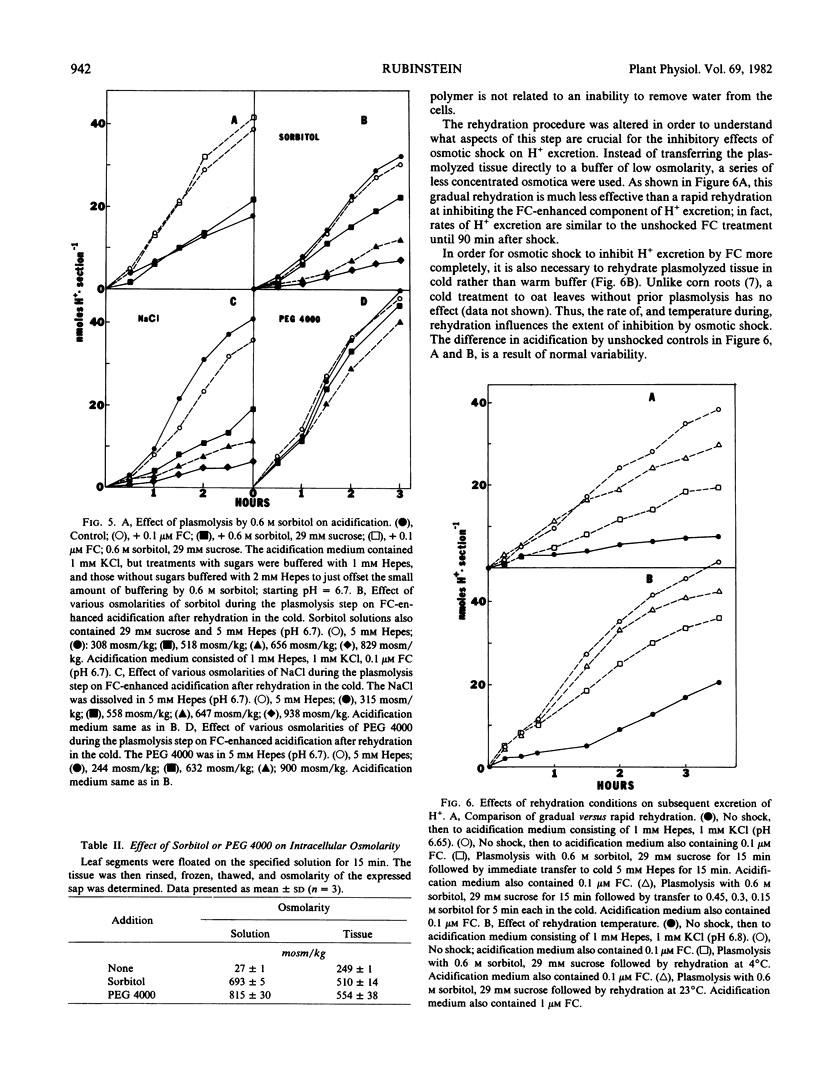
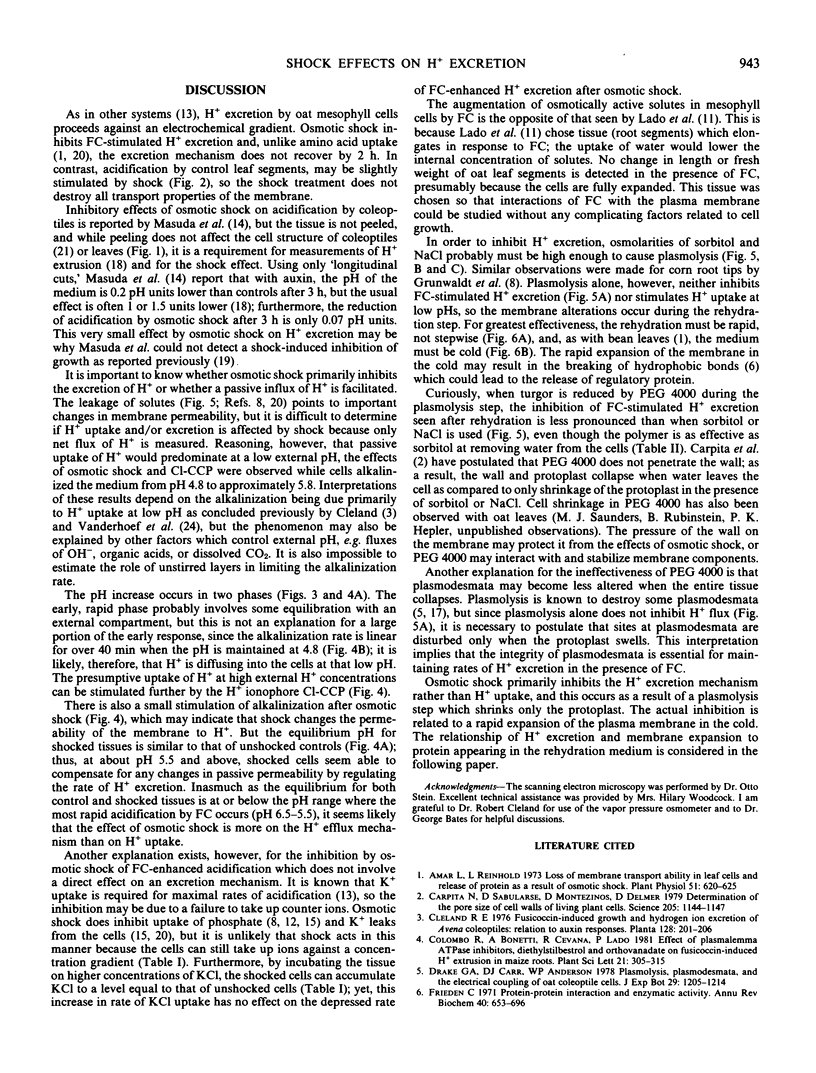
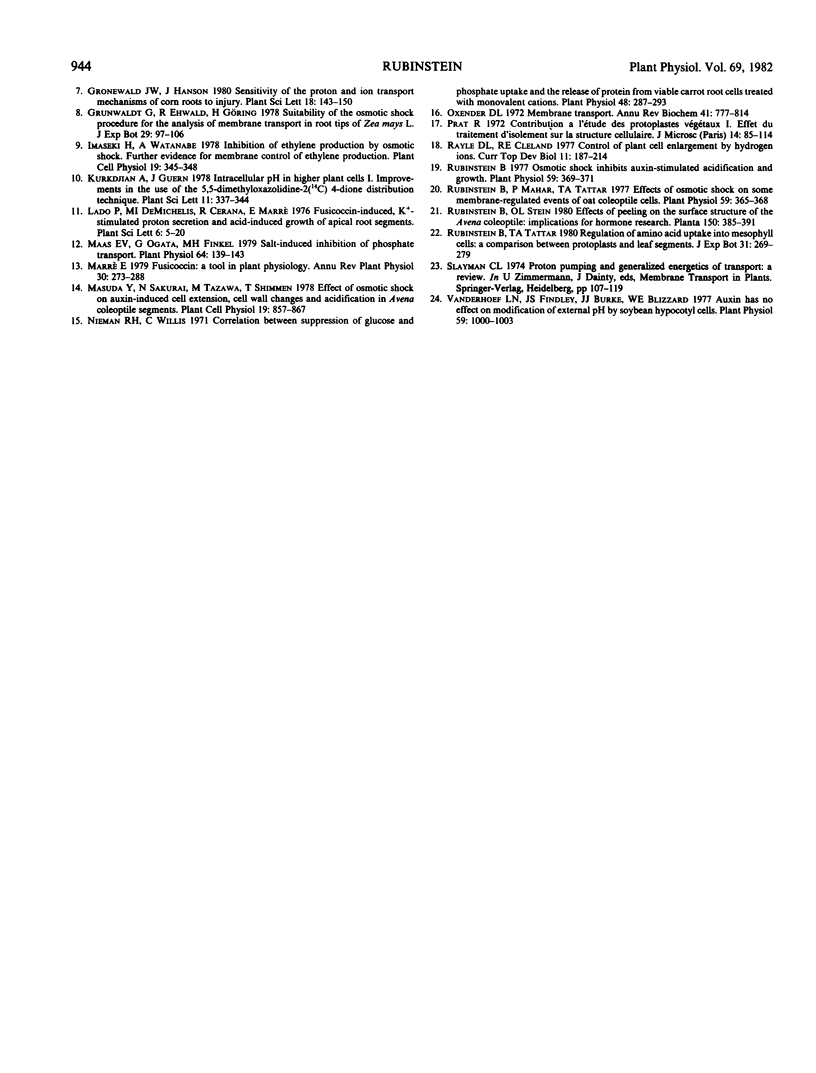
Images in this article
Selected References
These references are in PubMed. This may not be the complete list of references from this article.
- Amar L., Reinhold L. Loss of membrane transport ability in leaf cells and release of protein as a result of osmotic shock. Plant Physiol. 1973 Apr;51(4):620–625. doi: 10.1104/pp.51.4.620. [DOI] [PMC free article] [PubMed] [Google Scholar]
- Carpita N., Sabularse D., Montezinos D., Delmer D. P. Determination of the pore size of cell walls of living plant cells. Science. 1979 Sep 14;205(4411):1144–1147. doi: 10.1126/science.205.4411.1144. [DOI] [PubMed] [Google Scholar]
- Frieden C. Protein-protein interaction and enzymatic activity. Annu Rev Biochem. 1971;40:653–696. doi: 10.1146/annurev.bi.40.070171.003253. [DOI] [PubMed] [Google Scholar]
- Maas E. V., Ogata G., Finkel M. H. Salt-induced Inhibition of Phosphate Transport and Release of Membrane Proteins from Barley Roots. Plant Physiol. 1979 Jul;64(1):139–143. doi: 10.1104/pp.64.1.139. [DOI] [PMC free article] [PubMed] [Google Scholar]
- Nieman R. H., Willis C. Correlation between the Suppression of Glucose and Phosphate Uptake and the Release of Protein from Viable Carrot Root Cells Treated with Monovalent Cations. Plant Physiol. 1971 Sep;48(3):287–293. doi: 10.1104/pp.48.3.287. [DOI] [PMC free article] [PubMed] [Google Scholar]
- Oxender D. L. Membrane transport. Annu Rev Biochem. 1972;41(10):777–814. doi: 10.1146/annurev.bi.41.070172.004021. [DOI] [PubMed] [Google Scholar]
- Rayle D. L., Cleland R. Control of plant cell enlargement by hydrogen ions. Curr Top Dev Biol. 1977;11:187–214. doi: 10.1016/s0070-2153(08)60746-2. [DOI] [PubMed] [Google Scholar]
- Rubinstein B., Mahar P. Effects of Osmotic Shock on Some Membrane-regulated Events of Oat Coleoptile Cells. Plant Physiol. 1977 Mar;59(3):365–368. doi: 10.1104/pp.59.3.365. [DOI] [PMC free article] [PubMed] [Google Scholar]
- Rubinstein B. Osmotic Shock Inhibits Auxin-stimulated Acidification and Growth. Plant Physiol. 1977 Mar;59(3):369–371. doi: 10.1104/pp.59.3.369. [DOI] [PMC free article] [PubMed] [Google Scholar]
- Vanderhoef L. N., Findley J. S., Burke J. J., Blizzard W. E. Auxin Has No Effect on Modification of External pH by Soybean Hypocotyl Cells. Plant Physiol. 1977 May;59(5):1000–1003. doi: 10.1104/pp.59.5.1000. [DOI] [PMC free article] [PubMed] [Google Scholar]



